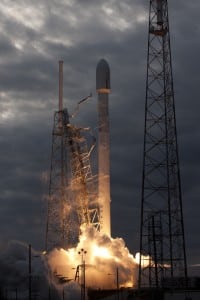
A thrust vector activator issue Tuesday scrubbed a Space Exploration Technologies Corp. (SpaceX) launch for the second time in just over six months.The company was scheduled Tuesday to begin its fifth Cargo Resupply Services (CRS-5) mission for NASA, but canceled at the last minute. SpaceX said on its website that engineers observed drift on one of the two thrust vector actuators on the second stage of the Falcon 9 rocket during the terminal count. The company said this would have…













